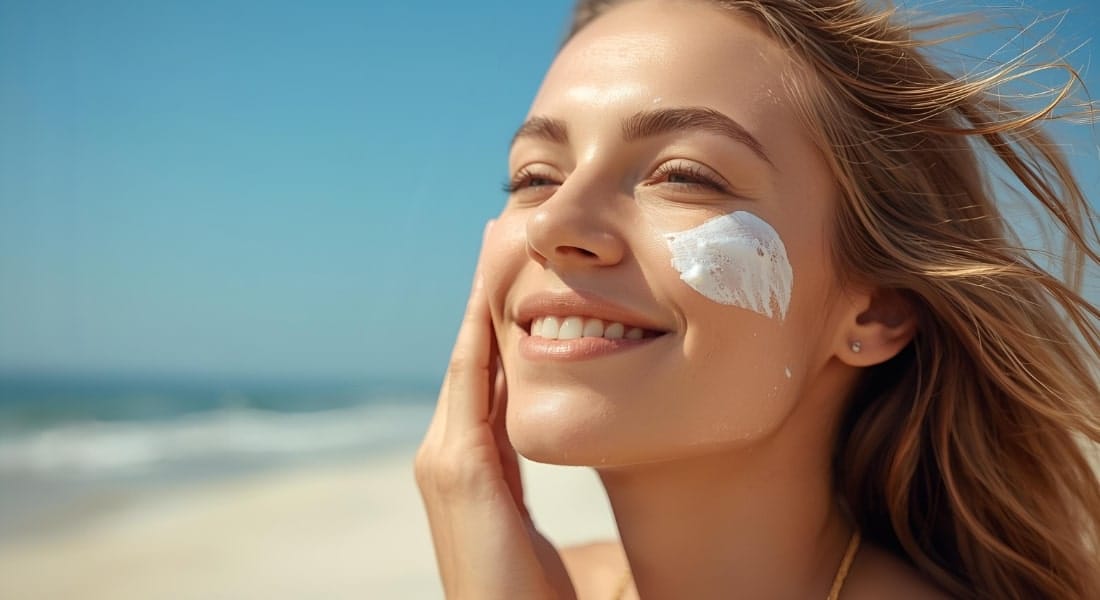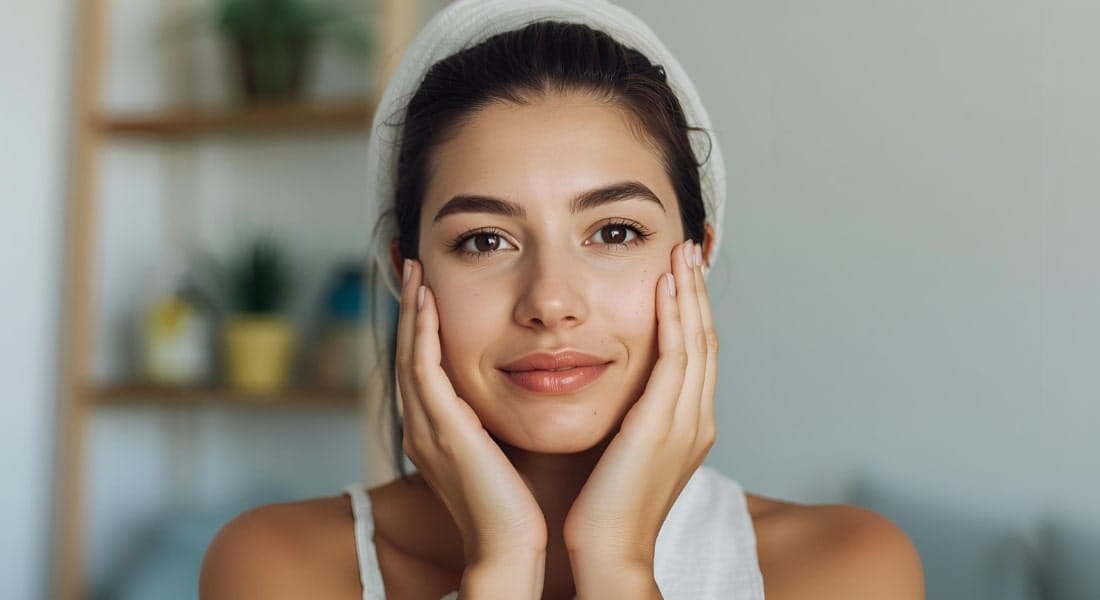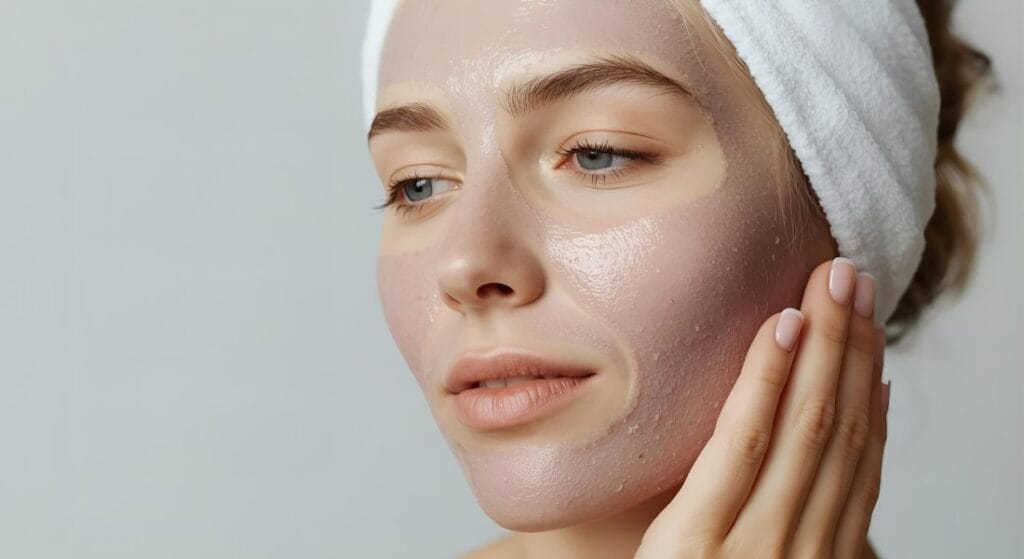Acne is a nearly universal skin concern, but for many, the journey doesn’t end when the pimples disappear. What’s left behind—those persistent reminders of past breakouts—can be just as frustrating as the breakouts themselves. Acne scars and dark spots are a common concern, impacting self-confidence and skin texture. If you’ve ever looked in the mirror and wished away those marks, you’re not alone.
The good news is that you have more power than you think. While deep scars may require a dermatologist, there are many effective ways to reduce acne scars at home and restore a smoother, more even complexion. This comprehensive guide will walk you through everything you need to know, from understanding the different types of scars to building a simple, effective skincare routine. We’ll explore home remedies for acne scars that are scientifically proven, and debunk the ones that aren’t. By the end, you’ll have a clear, step-by-step plan to start your journey toward clearer skin.
Understanding Acne Scars: What Are They, Really?
Before we talk about how to get rid of them, it’s crucial to understand what you’re dealing with. Many people confuse post-acne dark spots with true scars, but they’re not the same thing.
- Post-Inflammatory Hyperpigmentation (PIH): These are the flat, brown, or reddish marks that linger after a pimple has healed. They aren’t true scars; they are just a temporary discoloration caused by inflammation. They occur when your skin produces excess melanin (pigment) in response to the irritation from a pimple. PIH is often the easiest to treat at home and will usually fade on its own over time, though products can speed up the process.
- True Acne Scars: These are a change in the skin’s texture, either a depression or a raised area, caused by damage to the collagen and elastin in the deeper layers of the skin. They form when the body either produces too little or too much tissue during the healing process.
There are two main types of true acne scars:
- Atrophic (Depressed) Scars: These are the most common type. They form when there isn’t enough collagen produced during healing, causing an indentation in the skin. They’re often categorized further:
- Ice Pick Scars: Small, deep, and narrow V-shaped holes that resemble a puncture from an ice pick. They are often difficult to treat at home.
- Boxcar Scars: Broader, U-shaped scars with sharp, defined edges, similar to chickenpox scars.
- Rolling Scars: Wide, shallow depressions that give the skin a wavy, uneven texture.
- Hypertrophic (Raised) Scars: These are thick, raised scars that form when the body produces too much collagen during the healing process. They are less common on the face and often occur on the chest or back.
Comparison Table: Acne Scar Types and Their Treatments
| Scar Type | Description | At-Home Treatment Approach | Professional Treatments (Dermatologist) |
| Post-Inflammatory Hyperpigmentation (PIH) | Flat, dark spots (red/brown) that are a temporary discoloration. | Vitamin C, Niacinamide, Retinoids, Exosomes, Sunscreen. | Chemical Peels, Laser Therapy. |
| Atrophic Scars | Depressed scars (ice pick, boxcar, rolling) caused by a lack of collagen. | Retinoids, Exosomes, Peptides. Focus on collagen boosting. | Microneedling, Laser Resurfacing, Subcision, Fillers. |
| Hypertrophic Scars | Raised, lumpy scars caused by an overproduction of collagen. | Silicone sheets or gels (consult with a dermatologist for specific products). | Steroid Injections, Cryotherapy, Laser Therapy. |
Everyday Habits That Help Reduce Acne Scars
While you may be eager to dive into products, the most effective at-home acne scar treatments that work start with your daily habits. Think of these as the foundation of your skincare routine.

1. The Golden Rule: Wear Sunscreen
This is non-negotiable. Sun exposure significantly darkens PIH and makes it much harder for these spots to fade. UV rays also damage collagen, which can worsen the appearance of true scars. Make a broad-spectrum sunscreen with at least SPF 30 a daily habit, rain or shine.
2. Be a Gentle Cleanser
Avoid harsh, stripping cleansers. They can irritate your skin, worsen inflammation, and slow down the healing process. Opt for a gentle, hydrating cleanser that removes dirt and oil without leaving your skin feeling tight or dry.
3. Hands Off! Avoid Picking and Squeezing
We’ve all been tempted, but picking or squeezing a pimple is the single worst thing you can do for your skin. This action can force bacteria deeper into the skin, increase inflammation, and physically tear the skin, directly leading to new, deeper scars. Let your breakouts heal on their own or use a spot treatment.
Effective Ingredients for At-Home Acne Scar Treatment
For a beginner’s guide to acne scar treatment, it’s crucial to know which ingredients are backed by science. These “workhorse” ingredients are designed to improve skin texture and fade dark spots.
Vitamin C: The Brightening Star
This powerful antioxidant is essential for building collagen, which improves skin elasticity. It also fades dark spots (PIH) by blocking excess melanin production. Look for it in serums.
Retinoids: The Cell Turnover Accelerators
As Vitamin A derivatives, retinoids accelerate cell turnover, helping to shed pigmented cells and stimulate new collagen. This makes them a gold-standard ingredient for improving both discoloration and textural scars. Start with a low concentration to avoid irritation.
Exosomes: The Regenerative Game-Changers
Representing the next-generation of skincare, exosomes are tiny messengers that signal skin cells to repair and regenerate. Advanced regenerative products like etrelume Acnecidol Exo use them to promote a healthy healing environment and reduce post-acne marks.
Peptides & Hyaluronic Acid: The Building Blocks and Hydrators
- Peptides are building blocks for collagen and elastin, signaling your skin to rebuild and improve the texture of depressed scars.
- Hyaluronic Acid is a hydrating agent that keeps skin plump and resilient, which is vital for effective healing.
Moisturizers & Barrier Repair: The Resilient Foundation
A strong skin barrier is key to healing. Moisturizers with ceramides and fatty acids help repair and strengthen this barrier. Products like Swyada Exocicar are specifically formulated to improve skin resilience and support the healing process.
Step-by-Step Beginner’s Skincare Routine for Acne Scars
Consistency is key. This simple routine uses the ingredients we just discussed to give you a clear plan for your day and night.

Your Morning Routine
- Cleanse: Use a gentle, hydrating cleanser to wash your face.
- Vitamin C Serum: Apply a few drops of a Vitamin C serum. This not only helps fade dark spots but also provides antioxidant protection against environmental damage.
- Moisturize: Apply a lightweight, non-comedogenic moisturizer.
- Sunscreen: Finish with a broad-spectrum sunscreen of at least SPF 30. This is the single most important step for preventing further hyperpigmentation and scar damage.
Your Evening Routine
- Double Cleanse (Optional but Recommended): If you wear makeup or heavy sunscreen, start with an oil-based cleanser, followed by your regular cleanser.
- Targeted Treatment: This is where you’ll apply your scar-fighting ingredients. On alternating nights (start with 2-3 nights a week):
- Night 1: Retinoid: Apply a pea-sized amount of a retinol or retinoid serum. This will boost cell turnover and collagen production.
- Night 2: Exosome-Based Product: Use an advanced solution like etrelume Acnecidol Exo to promote cellular regeneration and repair.
- Moisturizer: Apply a barrier-repair moisturizer. Using a product like Swyada Exocicar can help soothe and strengthen your skin after active treatments, ensuring it stays hydrated and resilient.
Your Weekly Routine
- Exfoliation: Once or twice a week, use a chemical exfoliant with ingredients like AHA (Glycolic Acid) or BHA (Salicylic Acid). These help to gently slough off dead skin cells, improve texture, and fade dark spots. Do not use on the same night as a retinoid.
When to See a Dermatologist
While you can treat acne scars naturally and effectively at home, some scars require professional intervention. It’s time to see a dermatologist if:
- Your scars are deep and persistent: At-home solutions are most effective for PIH and minor textural issues. Deep ice pick or boxcar scars may not respond to topical treatments alone.
- You’re dealing with hypertrophic (raised) scars: These often need medical treatments like steroid injections or laser therapy.
- Your at-home routine isn’t working: If you’ve been consistent for 6-12 months and aren’t seeing a noticeable improvement, a professional can offer more powerful solutions.
Dermatologists can provide in-office treatments such as:
- Microneedling: A procedure that uses tiny needles to create micro-injuries in the skin, stimulating collagen production to improve texture.
- Chemical Peels: Stronger peels that use higher concentrations of acids to resurface the skin.
- Laser Therapy: Various lasers can target pigmentation, stimulate collagen, and resurface the skin to improve the appearance of scars.
Myths vs. Facts About Acne Scar Treatment
In your quest to fade dark spots from acne, you’ll likely encounter a lot of misinformation. It’s important to separate what works from what doesn’t.
Myth: Lemon juice and toothpaste are good home remedies for acne scars.
Fact: False. These are among the most common and dangerous myths. Lemon juice is highly acidic and can cause severe skin irritation, sensitivity to sunlight, and even chemical burns. Toothpaste contains ingredients like baking soda and alcohol that can disrupt your skin’s pH balance, leading to dryness, irritation, and further breakouts. Stick to ingredients with a proven scientific track record.
Myth: You can get rid of acne scars overnight.
Fact: False. Patience is the single most important factor in your acne scar reduction journey. Fading dark spots and improving skin texture takes time—weeks to months of consistent effort. True scars may take even longer. There is no magic bullet or overnight fix.
Frequently Asked Questions
Q1: What is the fastest way to reduce acne scars at home?
A: The quickest way to reduce acne scars is through a consistent routine using active ingredients and sun protection. Use a retinoid or exosome product at night to speed up cell turnover, and a Vitamin C serum in the morning for brightening. Daily SPF is essential to prevent marks from darkening.
Q2: Do home remedies work for acne scars?
A: Most popular “home remedies” like lemon juice or toothpaste are ineffective and can harm your skin, causing irritation or burns. It’s best to use scientifically proven ingredients like retinoids, Vitamin C, and niacinamide to safely and effectively treat acne scars.
Q3: Which skincare ingredients are best for acne scars?
A: Look for ingredients that boost collagen and cell renewal. Key ingredients include Retinoids and Exosomes for repair, and Vitamin C for brightening. Other beneficial ingredients are Niacinamide and Peptides, which help improve skin texture and strength.
Q4: How long does it take to see results from at-home acne scar treatments?
A: Patience is key, as results depend on the scar type. Dark spots (PIH) may start fading in 2-4 months. For true textural scars, it can take 6 months to over a year to see significant improvement. Consistency is the most important factor.

Conclusion
The journey to reduce acne scars at home is a marathon, not a sprint. It requires patience, consistency, and a smart, science-backed approach. By starting with a solid foundation of daily habits like sun protection and gentle cleansing, and incorporating clinically proven ingredients like Vitamin C, retinoids, and peptides, you can make a significant difference in the appearance of your skin.
Remember, advanced skincare solutions are making at-home care more effective than ever. Products like etrelume Acnecidol Exo can help your skin’s regenerative processes, and Swyada Exocicar can strengthen your skin’s natural barrier. For beginners, this combination of consistent routine and advanced, targeted treatments is the key to unlocking a smoother, more confident complexion.

